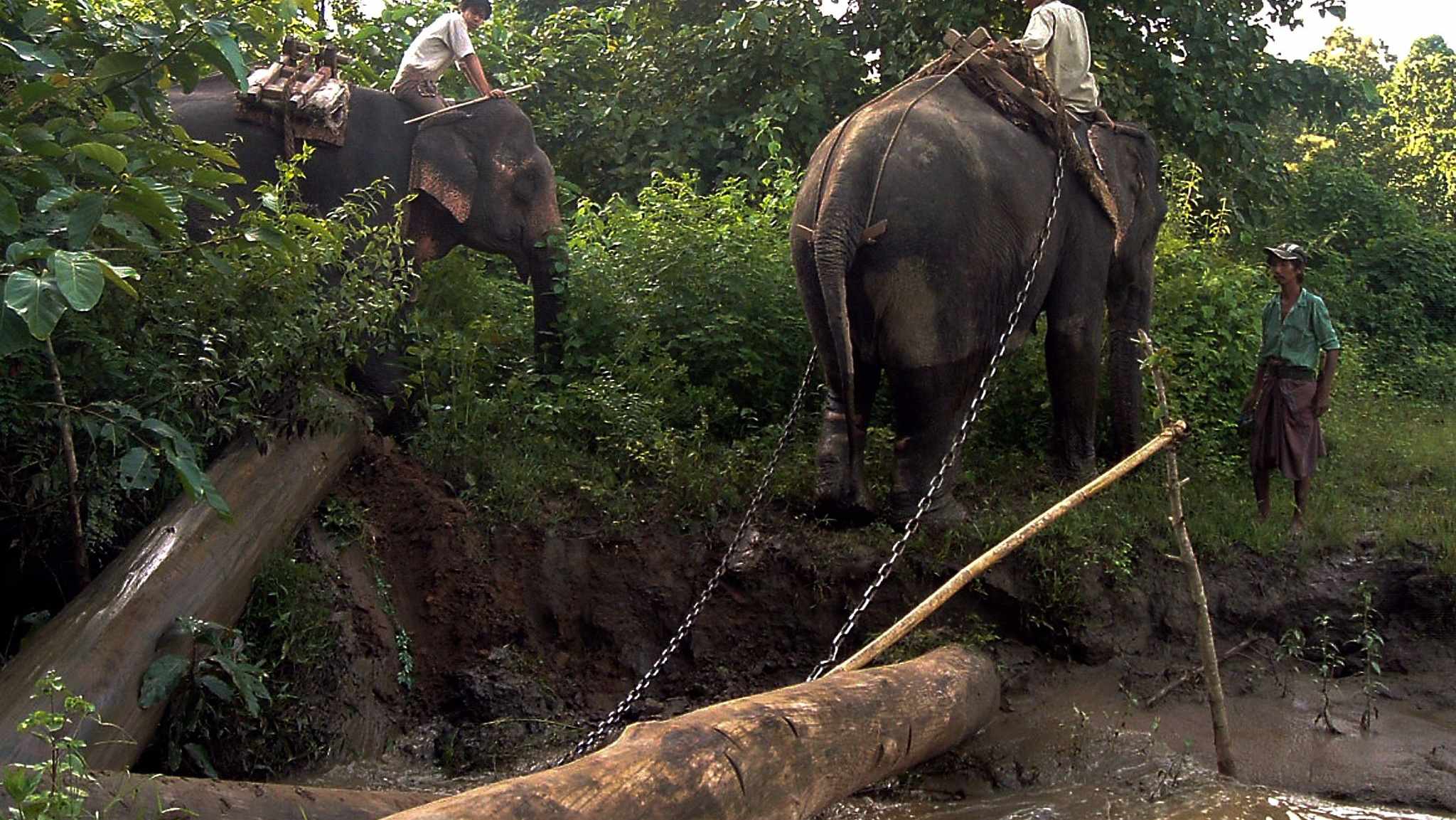
Tech & Sci
15:54, 08-Aug-2018
Asia's wild-captured worker elephants die young
Updated
14:52, 11-Aug-2018
CGTN

Asian elephants snatched from the wild and conscripted to haul logs in Myanmar's timber industry live on average five years less than working elephants born in captivity, researchers said Tuesday.
The older an elephant is at the time of capture, the more likely it is to die young, according to an analysis of government logs for 5,150 of the giant mammals -- two-fifths of them wild-born -- covering the period from 1951 to 2000.
The median lifespan for working captive-born males and females was 30 and 45 years, respectively. Among wild-caught animals, it was half-a-decade less for both sexes.
The trauma of being drugged or lassoed into submission during capture; the brutal process of "breaking" an animal so it will obey orders; separation from family -- all of these factors likely contribute to this foreshortened lifespan, the researchers speculated.
"Elephants are affected by long-term stress stemming from their earlier experiences and new life in captivity," Mirkka Lahdenpera, a professor at the University of Turku in Finland and lead author of a study detailing the findings, told AFP.
Earlier research has shown that both African and Asian elephants are highly social. Calves separated from mothers, for example, can suffer long-lasting trauma.
Indeed, for this reason, traffickers selling the animals into Thailand's tourist trade or Myanmar's logging industry generally avoid taking calves under five years old that still suckle their mothers.
Currently, there are some 5,000 adult elephants toiling in Myanmar, the vast majority dragging freshly cut tree trunks through the dense jungle to transport hubs and mills.
Carrying the scars

An elephant pulls a teak log in a logging camp in Pinlebu township, Sagaing, northern Myanmar. /VCG Photo
An elephant pulls a teak log in a logging camp in Pinlebu township, Sagaing, northern Myanmar. /VCG Photo
Because they breed poorly in captivity, there is constant demand for wild specimens.
In Myanmar, the highly valuable animals are protected by government regulations that mandate maximum workloads and rest periods.
Timber industry elephants have holidays, maternity leave and a mandatory retirement age.
Most work during the day and are released to forests during the night to forage and socialize, with both captive and wild peers.
"Captive-born working timber elephants in Myanmar live as long as wild ones," Lahdenpera noted.
But the study, published in Nature Communications, highlighted the cost to these majestic creatures of the violent transition from jungle to a life of servitude.
"Wild-caught elephants carry the scars from their capture for a long, long time," said Lahdenpera.
"We should find an alternative and better methods to boost the captive populations."
The worst environments for elephants are zoos, which shorten lifespans most of all.
Asian elephants -- Elephas maximus -- used to roam across most of Asia, but are today restricted to 15 percent of their original range. Of the 45,000 remaining, about a third live in captivity.
The species is listed as "endangered" on the International Union for the Conservation of Nature Red List.
Some Asian elephants live well into their 70s.
(Cover Image: This file photo taken on February 19, 2008, shows workers using elephants for logging at an undisclosed location in Myanmar. /VCG Photo)
Source(s): AFP

SITEMAP
Copyright © 2018 CGTN. Beijing ICP prepared NO.16065310-3
Copyright © 2018 CGTN. Beijing ICP prepared NO.16065310-3